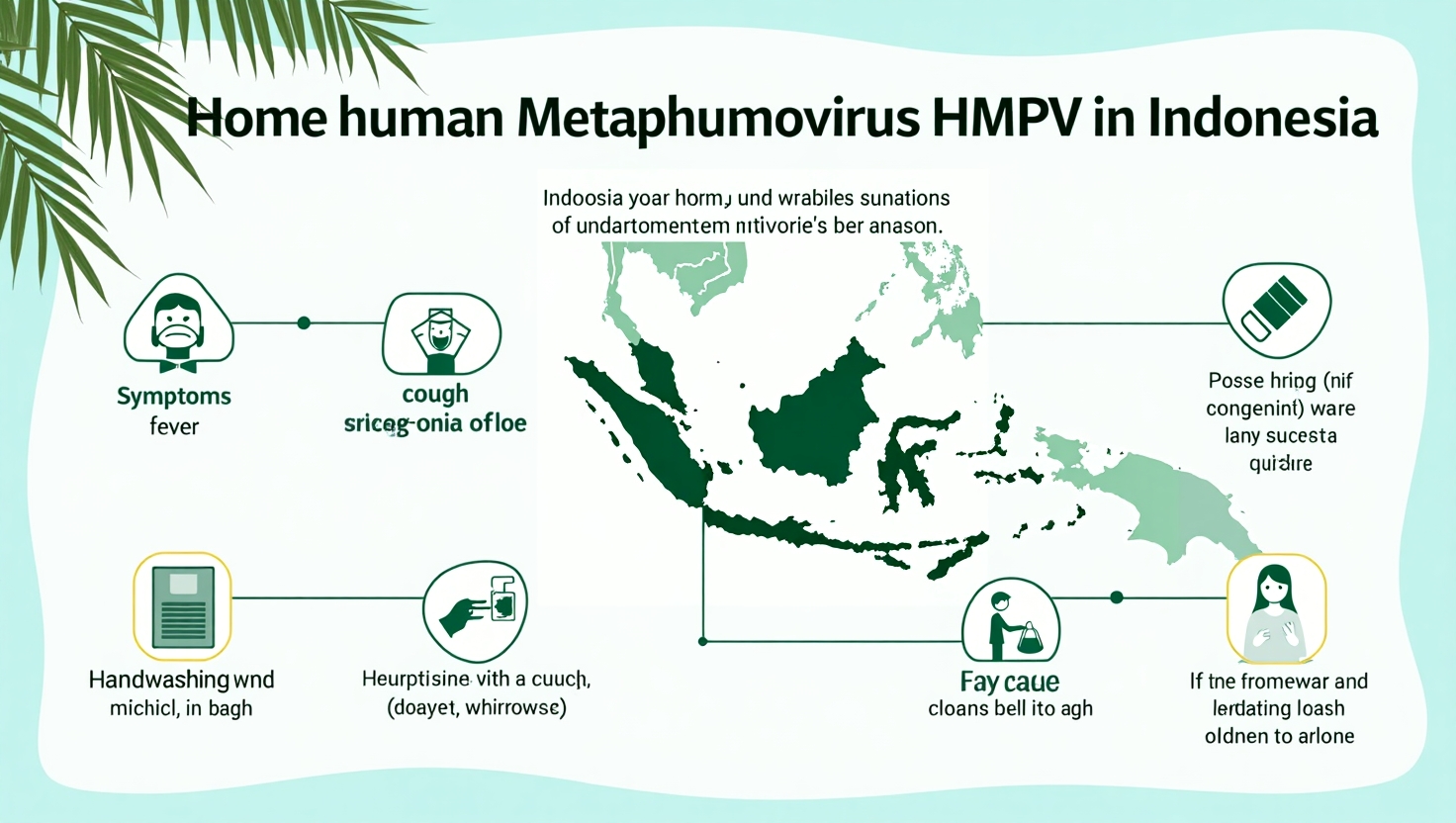
Human Metapneumovirus (HMPV) is a respiratory virus that has emerged as a significant cause of illness worldwide. In Indonesia, where respiratory infections are common, understanding the symptoms, causes, and prevention of HMPV is critical for public health. This article explores these aspects to help raise awareness and reduce the impact of this virus.
Symptoms of HMPV
HMPV primarily affects the respiratory system, and its symptoms can range from mild to severe. Common symptoms include:
- Fever: A persistent or high fever is a common early sign of HMPV.
- Cough: Dry or productive coughing is often reported by those infected.
- Nasal Congestion: Blocked or runny nose is a frequent symptom, especially in children.
- Sore Throat: Discomfort in the throat can accompany other respiratory symptoms.
- Wheezing: Difficulty in breathing, often accompanied by a wheezing sound, is more common in severe cases.
- Fatigue: General tiredness and weakness can occur due to the body’s response to the virus.
In severe cases, HMPV can lead to complications such as pneumonia or bronchiolitis, particularly in young children, the elderly, and individuals with pre-existing health conditions. These complications may require hospitalization.
Causes of HMPV
HMPV is caused by a virus from the Paramyxoviridae family. It spreads primarily through respiratory droplets when an infected person coughs, sneezes, or talks. The virus can also be transmitted by touching contaminated surfaces and then touching the face, particularly the eyes, nose, or mouth.
Several factors contribute to the spread of HMPV in Indonesia:
- Dense Population: Crowded urban areas increase the likelihood of person-to-person transmission.
- Climate: While HMPV is more common in colder months globally, Indonesia’s tropical climate allows year-round transmission with seasonal peaks.
- Limited Awareness: Many people in Indonesia are unaware of HMPV, leading to delayed diagnosis and treatment.
- Healthcare Accessibility: Unequal access to healthcare services in rural and remote areas can hinder early detection and management.
Prevention of HMPV
Preventing HMPV requires a combination of individual and community-level efforts. Key prevention strategies include:
Personal Hygiene
- Frequent Handwashing: Washing hands with soap and water for at least 20 seconds reduces the risk of infection.
- Avoid Touching the Face: Minimizing contact with the eyes, nose, and mouth helps prevent the virus from entering the body.
Respiratory Etiquette
- Covering Coughs and Sneezes: Using a tissue or elbow to cover the mouth and nose reduces the spread of respiratory droplets.
- Wearing Masks: In crowded or high-risk areas, wearing a mask can significantly reduce transmission.
Environmental Measures
- Disinfecting Surfaces: Regular cleaning of frequently touched surfaces, such as doorknobs and smartphones, helps eliminate the virus.
- Improving Ventilation: Ensuring good airflow in indoor spaces reduces the concentration of airborne particles.
Community Awareness
- Educational Campaigns: Public health campaigns can inform communities about HMPV symptoms, transmission, and prevention.
- Access to Healthcare: Strengthening healthcare infrastructure and ensuring equitable access to medical services are essential for managing outbreaks.
Conclusion
HMPV poses a significant public health challenge in Indonesia, particularly for vulnerable populations.